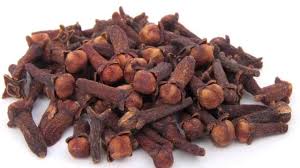FACTS ABOUT OMEGA 3 AND FISH OIL
1.Taking fish
oil supplements is as good as you as eating fish
Fish
like salmon, tuna, and mackerel, and fish oil capsules all have heart-healthy
omega-3 fatty acids.
But
adding fish to your diet carries healthy bonuses that you won't get from a
supplement: calcium and vitamins B2 and D. It's also an excellent source of
protein.So try
to eat fish more often. Have it two times a week instead of meat.
2.Fish oil is good for your heart
Omega-3s
like DHA and EPA in fish oil and other sources can lower triglycerides, a type
of fat in your blood. But to lower high triglyceride levels you need 2-4 grams
of DHA/EPA a day.You would have to take a lot of fish oil supplements to get that amount. And you can't be
sure how many omega-3s are actually in a supplement, because the FDA doesn't
regulate them as closely.You have
a couple of options, both of which involve your doctor. You can take high doses
of non-prescription fish oil under your doctor's care. Or there are
prescription medicines available with high doses of fish oil.If you
don't have high triglycerides? Find a favorite fish to eat!
3.If you don’t eat fish, where else you can get omega 3
Fish is still your
best bet for omega-3s. While organ meats, like liver, do have some omega-3s,
you can't rely on them to give you all you need.
- some vegetable oils, especially
flax seed oil
- green vegetables like kale or
spinach
Walnuts can provide
the omega-3 known as ALA, which your body doesn't make.Your body can turn ALA
into small amounts of two other types of omega-3s, EPA and DHA. These are the
kinds of omega-3s found in fish. There's more proof that they protect against
heart disease.Vegetarians and vegans
can look at algae oils as a source of omega-3s.
None of these
substitutes packs the omega-3 power of fish.
4.How much fish should most people eat
Eat fish -- preferably
oily fish like salmon, herring, lake trout, sardines, or albacore tuna -- twice
a week. A serving is 3.5 ounces, or about 3/4 cup of flaked fish.It's generally safe to
eat up to 12 ounces of fish or shellfish a week, if they are the
lower-in-mercury types.
Fish that are low in
mercury:
- shrimp
- canned light tuna
- salmon
- Pollock
- catfish
5. omega 3s may reduce diabetes
Studies
show that omega-3 fatty acids lower high triglycerides, a common problem in
people with diabetes. The American Diabetes Association says people with
diabetes should get more omega-3s, preferably by eating two or three 3-ounce
servings of fish a week.





















